Submitted by WA Contents
Raz Architects built this visitor center as mediational structure in an archeological site of Israel
Israel Architecture News - Nov 08, 2019 - 13:50 14775 views
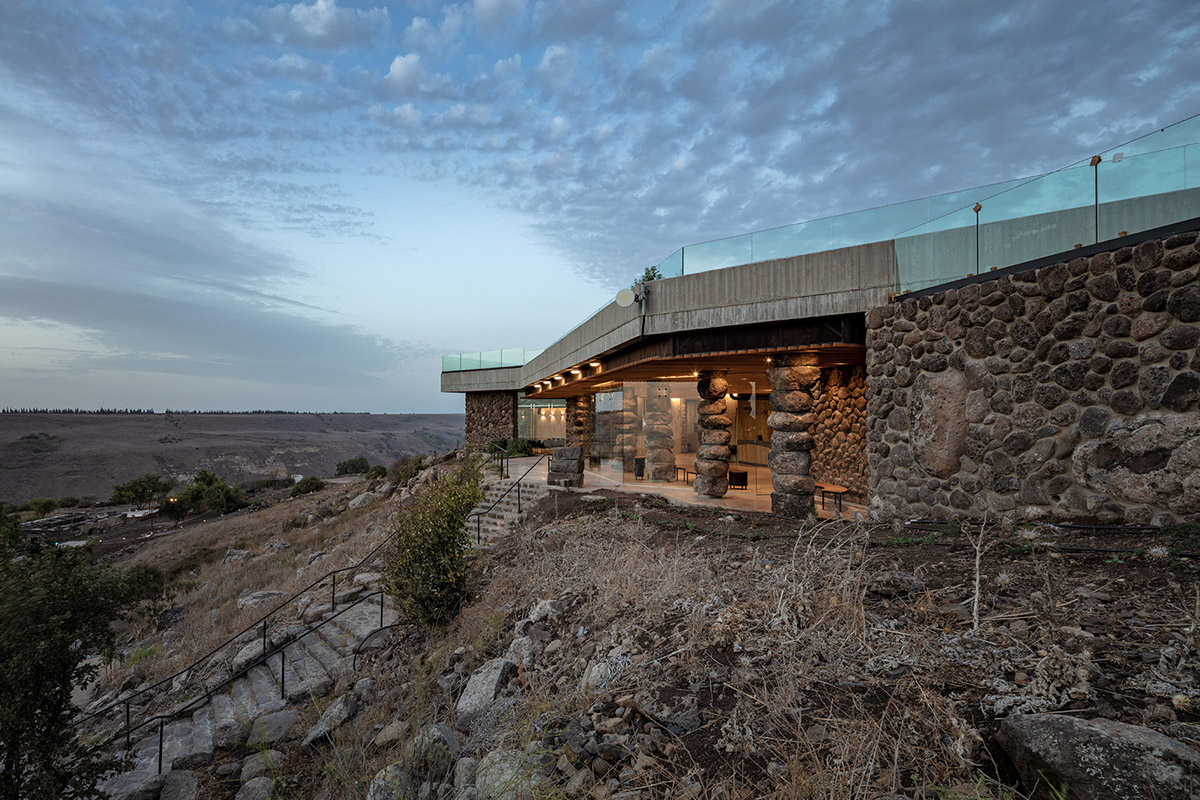
Israeli architecture studio Raz Architects has built a visitor center that makes itself belong to the archeological site of Israel. Called Ein Keshatot Visitors Center, the building is located in a historic site (formerly called Umm el Kanatir – Mother of arches) is already popular tourist site in the Golan Heights.
Covering a total of 400-square-metre area, the visitor center was built on the site by using raw materials, such as concrete, stone, rustic steel, as much as possible, referring the character of the area.
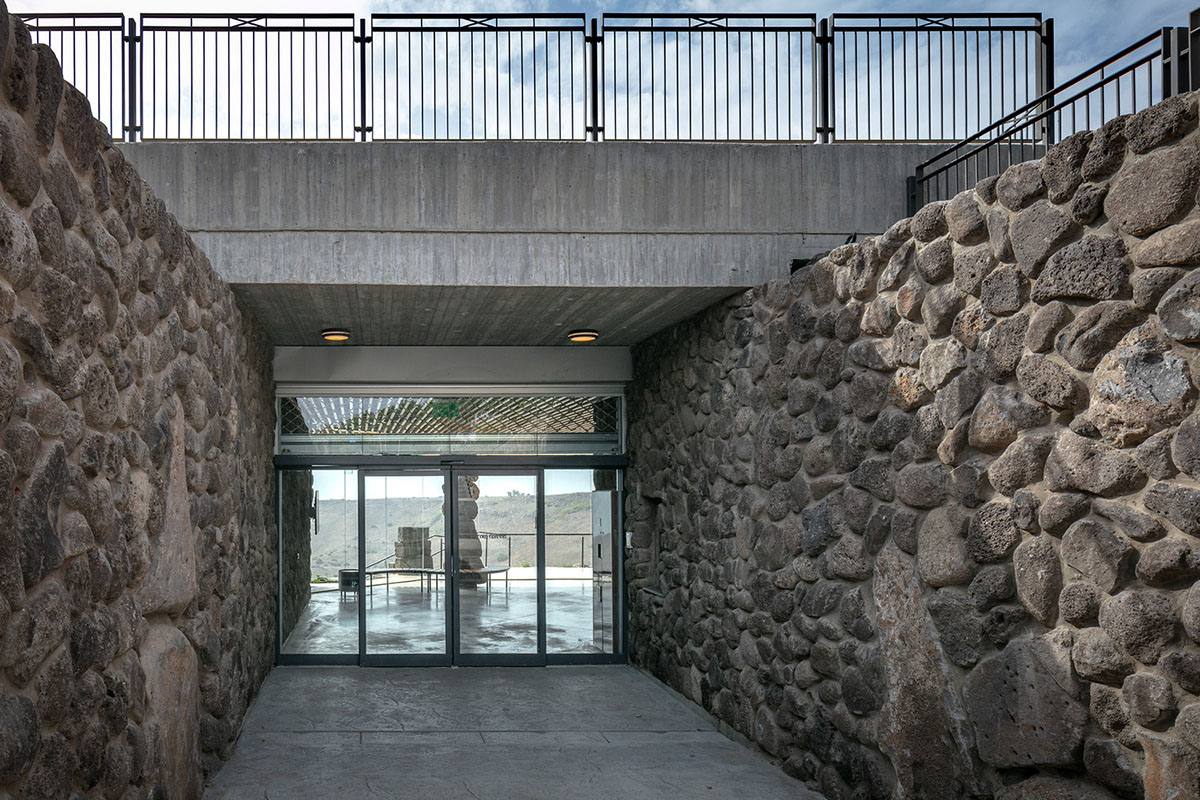
Described as "a site of mediation," the visitor moves back and forth across spaces, between the constant evolving of bare nature and its integration within the architect’s work.
"Between the outdoor spectacle of the archeological site emerges out of the volcanic soil and the relaxed, soft design characterizes the facilitated indoor area. The visitor moves also across times," said Raz Architects.
"This site bridges over more than fifteen hundred years of historical significance. It mediates between an ancient site of religious worship and its possible interpretations within the contemporary political context of Israel’s efforts to reconstruct its national identity."
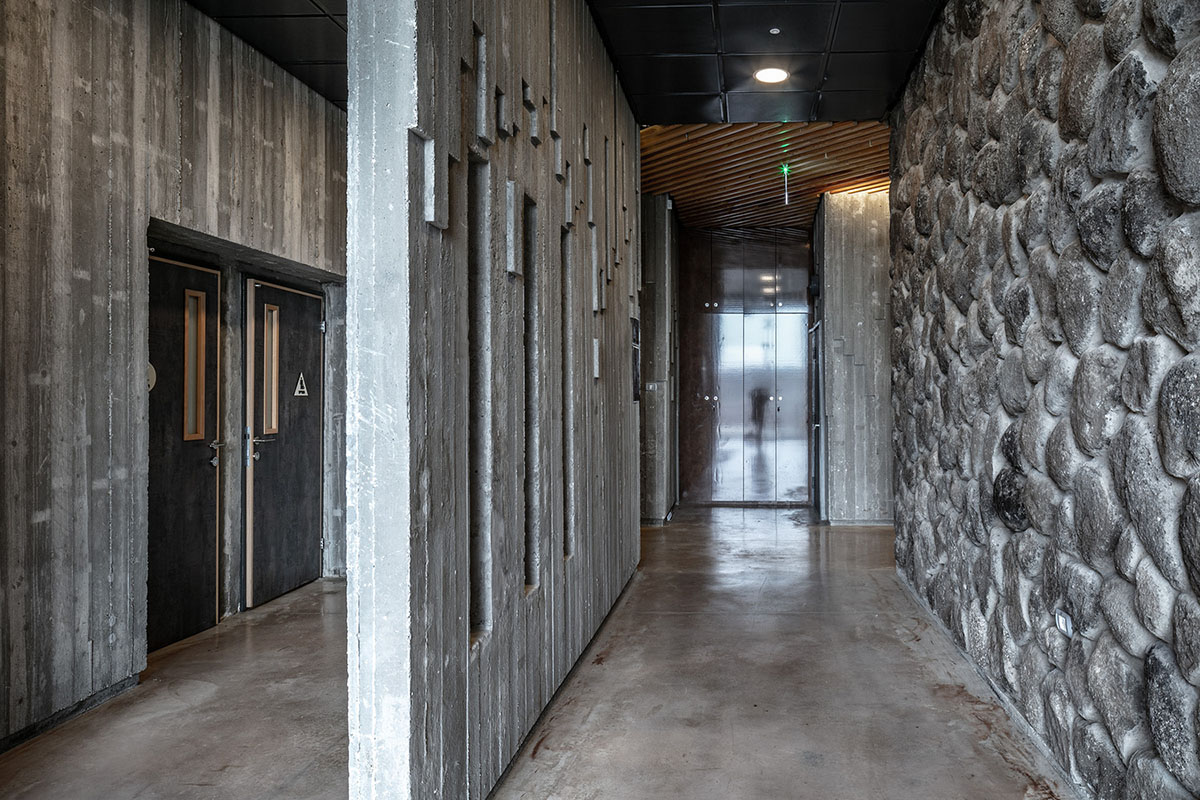
The archeological site includes an ancient synagogue which is estimated to be built in the 5th century - demolished by an earthquake in 749, recently partly restored. The Hebrew name Ein Keshatot (Arabic: Umm el-Kanatir) means "Arches Spring", is after the ancient synagogue by a spring that flows out of an arched structure.
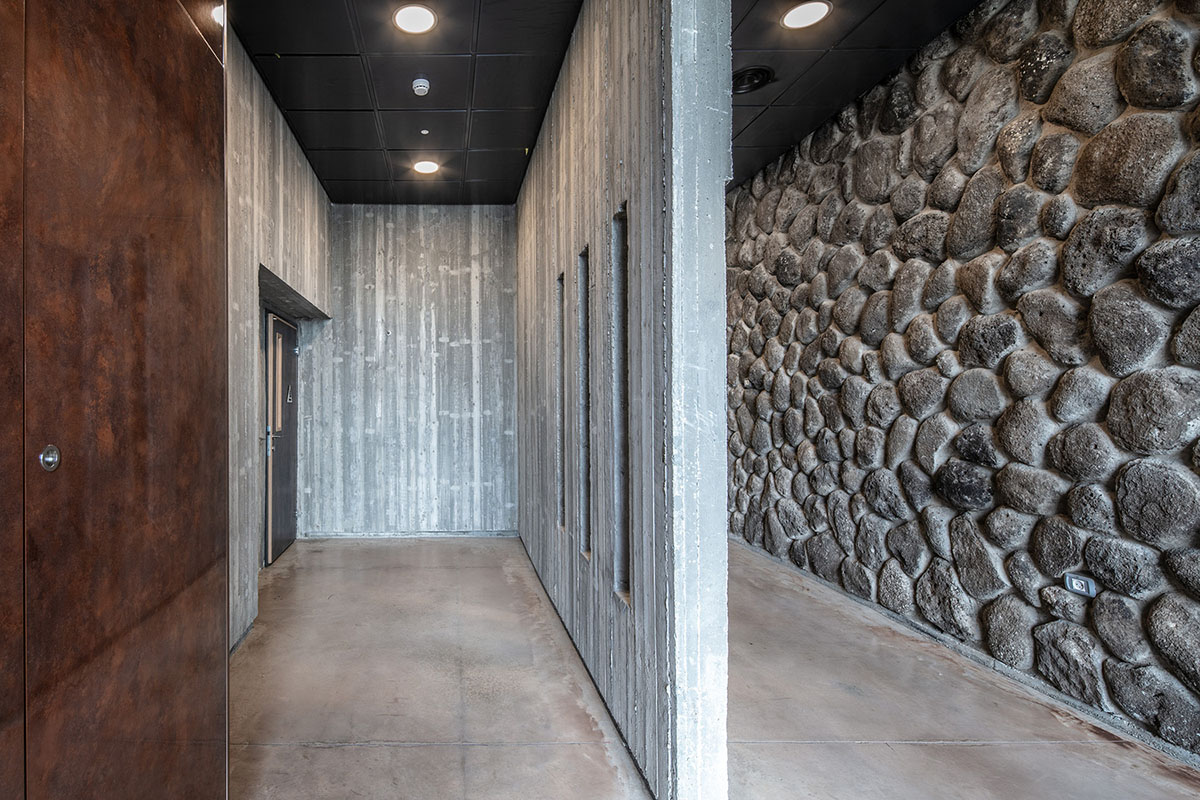
The architects stated that the idea to build it came up in a later stage of the site’s planning as a suitable solution for visitors needs, such as a site entrance, visitors flow control hub, necessary services, and a site preshow. Thus the building of the Visitors Center became an essential component in the touristic complex.
The natural wild area, the topography, geology, the dramatic view, the historical story and the location of the focal points were the key elements for the building - all those required to create a mediational structure.
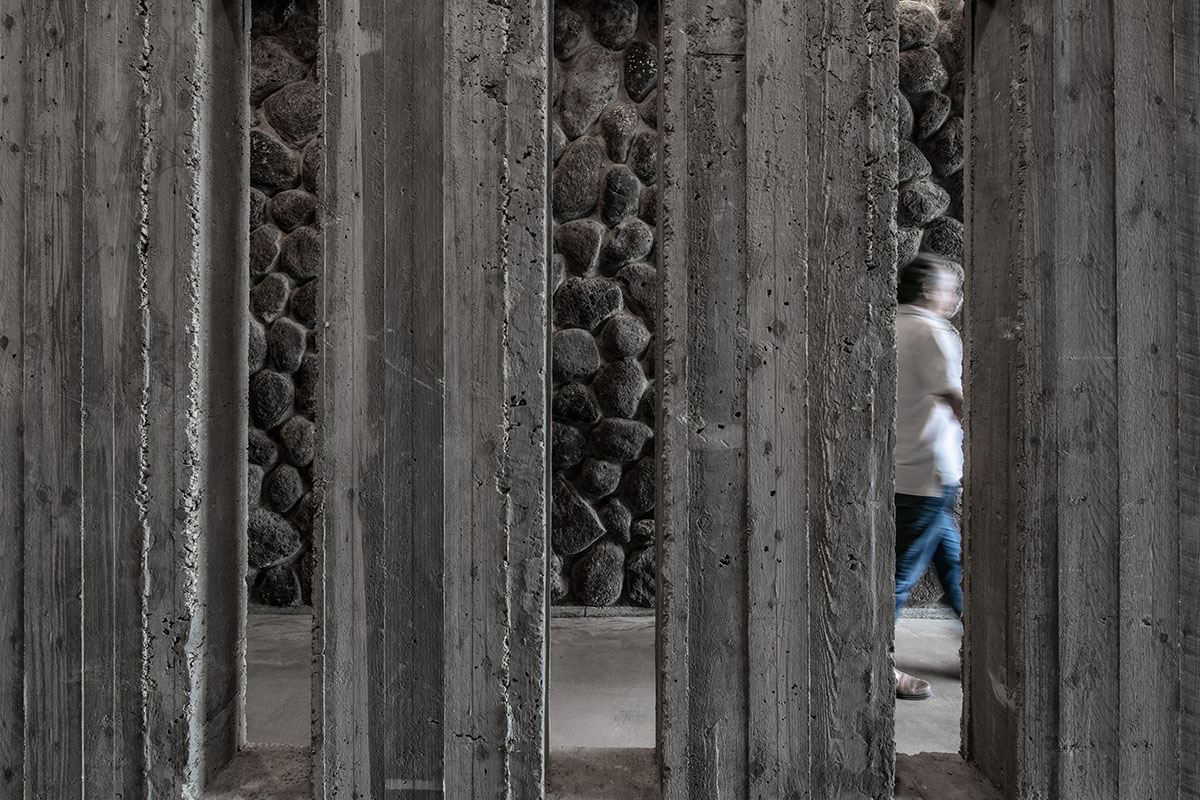
"The main architectural challenge was to integrate a stranger body with as little distortion as possible of the original authentic site," added the architects.
"Usually, an architectural planning process begins with a layout plan arranges functions horizontally. However, the process here was initiated in a vertical cross-section view."
"The new space is thus embodied within the topography and appears with only one transparent façade towards the west. The view from within the structure, reveals all main sites without competing with the original “stars”."
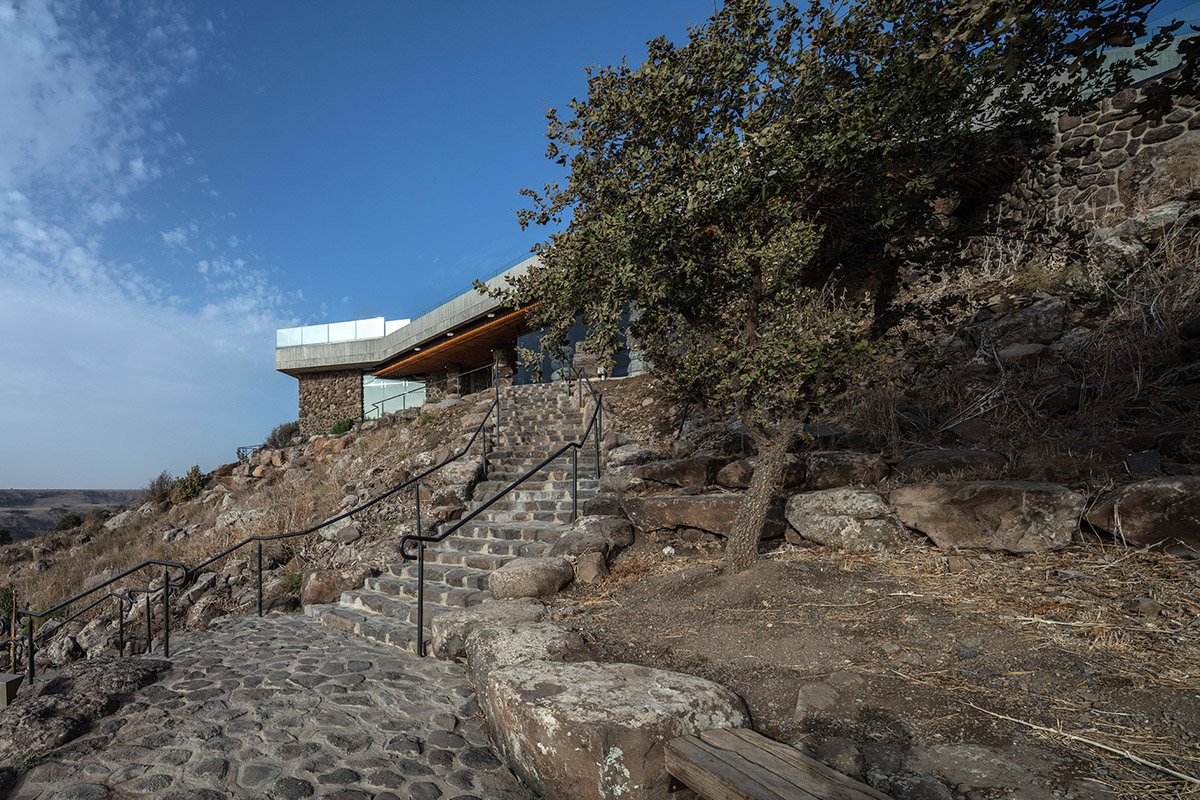
The west facade combines playfully transparency and the opacity, lightness massiveness. It offers simultaneously a panoramic view and its framed fragmentation.
It does so by placing a row of pillars made of massive, local Basalt stones. By utilizing a unique technology these pillars are serving as structural elements that support the structure. In addition, they define the space and at times frame the view.
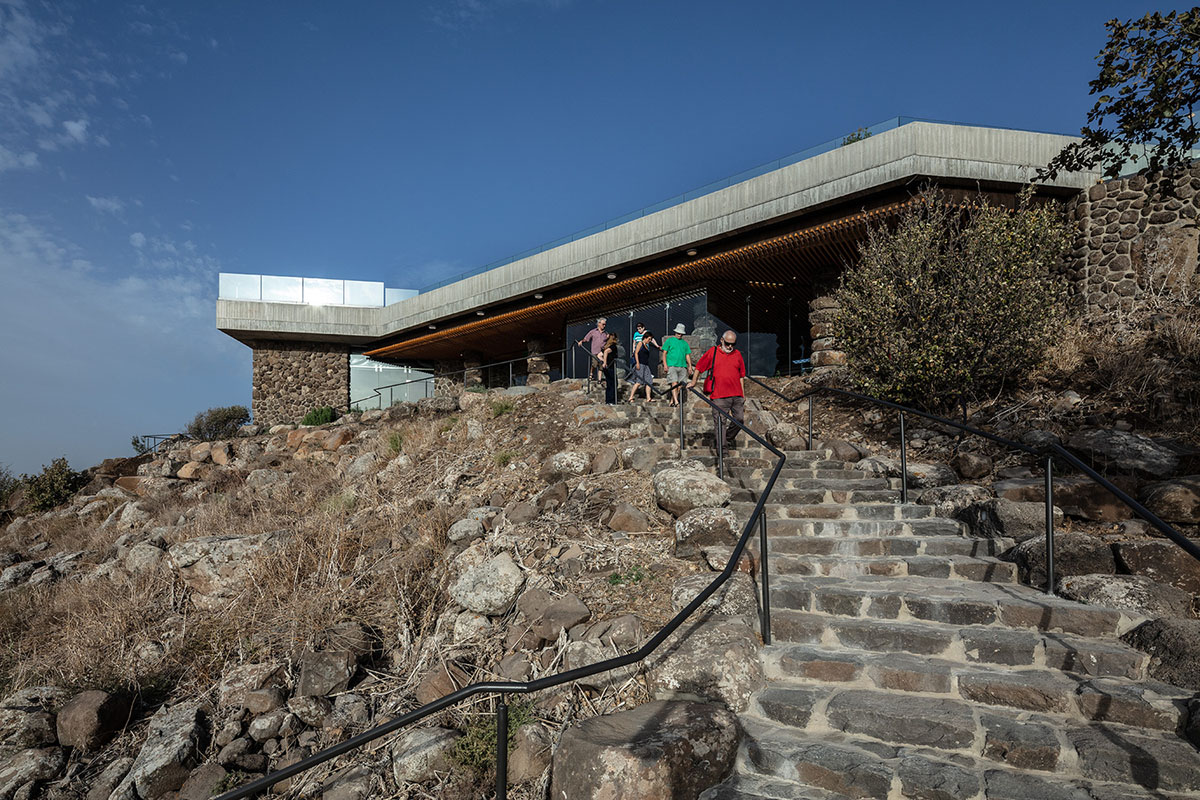
Between the row of the Basalt pillars, the visitor sees an all-glass wall turning around it, allowing access to walk and experience the view also from behind the stones frame. The entrance space offers an initial introduction for the planned tour, inconvenient indoor conditions, facilitated with an audiovisual guiding show, from where the visitor can see the ancient synagogue and the spring arched structure.
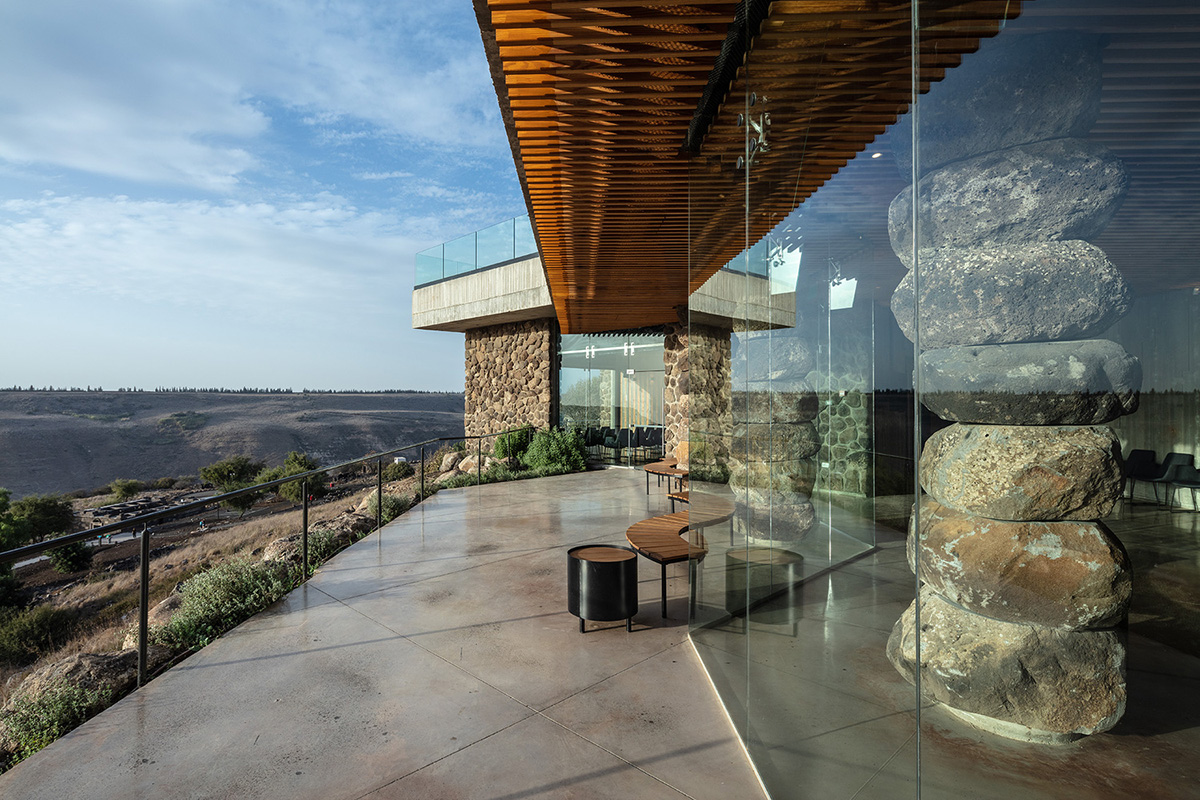
If the glazed facade reminds an open eye in the mountain, the wooden ceiling seems like its eyelashes that are softening the sunlight penetrates the indoor space. The chosen materials reflect the intention to embed the structure in the natural environment.

The architects used exposed concrete, basalt stone, rustic steel, which are characteristics of the area. Keeping these materials raw, with rather dimed light, in a cool and overall silent atmosphere, highlights the significance of the ancient site. The site tour starts and ends in the structure.
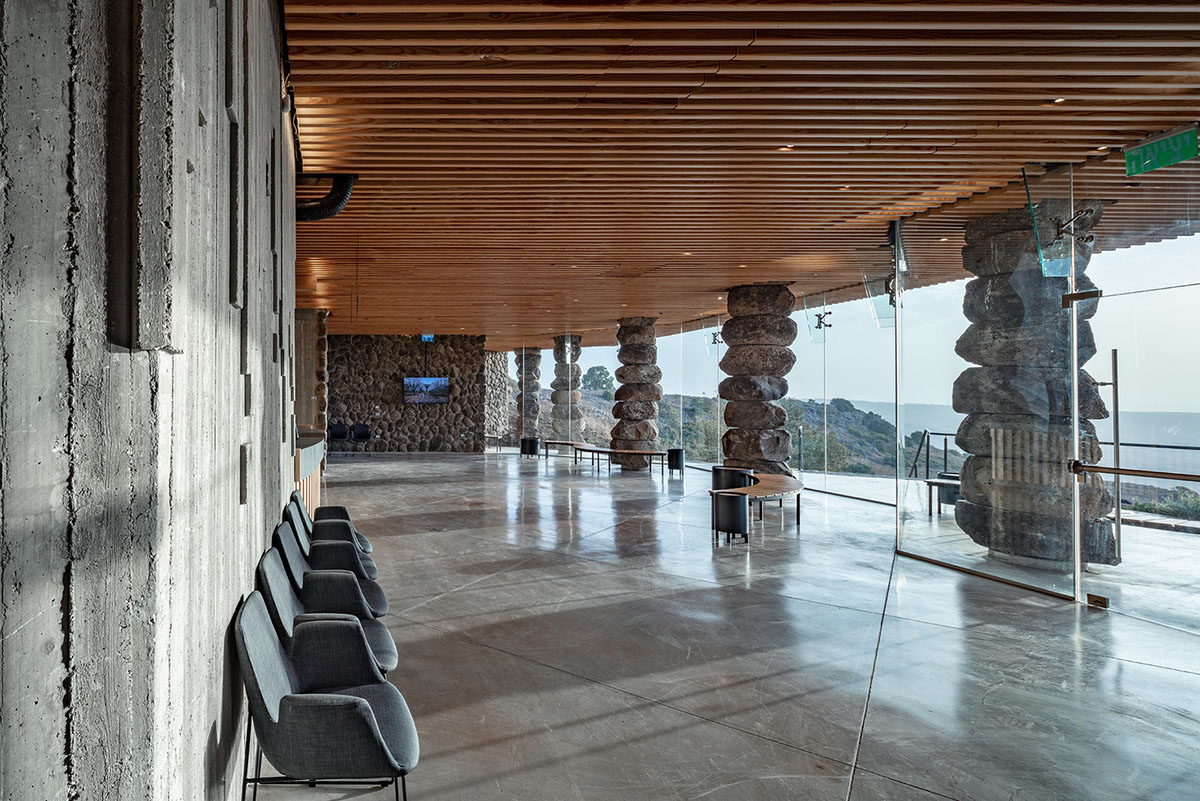
But when completing the tour, one approaches the space from different direction to the hall to summarize and “digest” the experience, to enjoy the cafeteria, the toilets, and to leave gradually through the "tunnel" to the open East view of the Golan Heights.
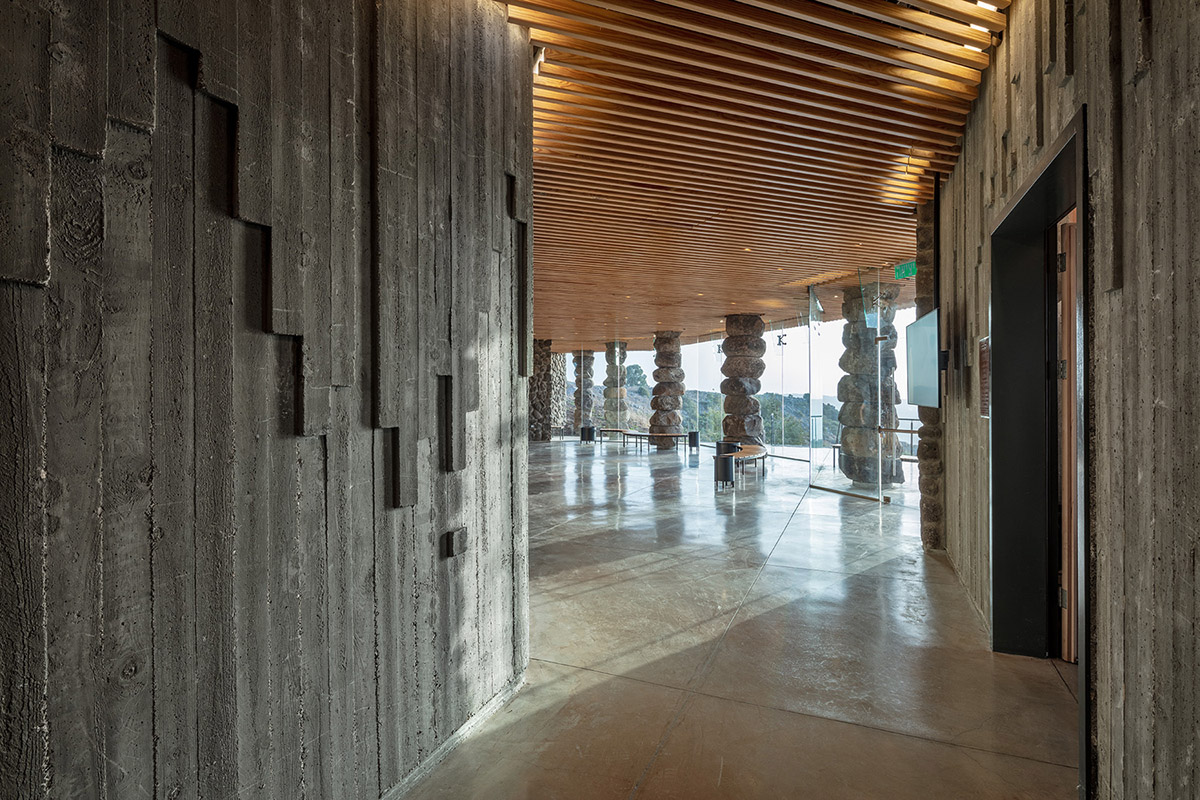
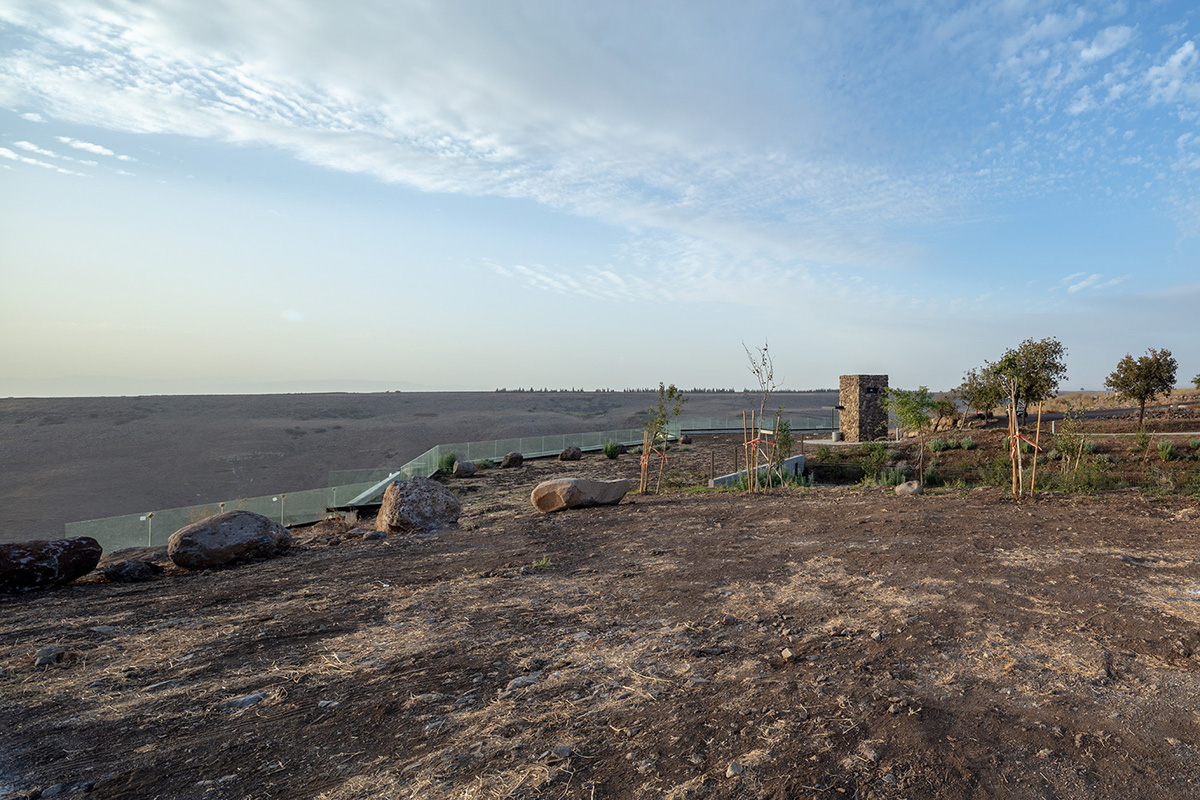

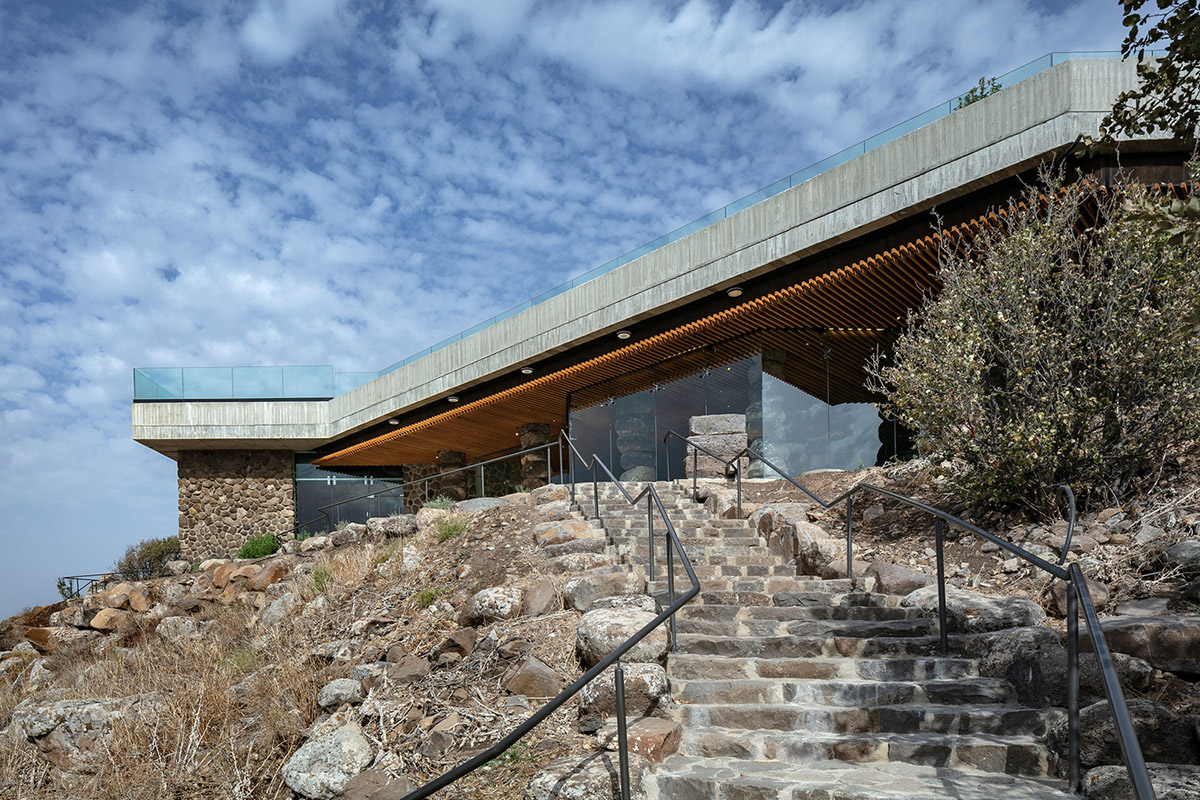
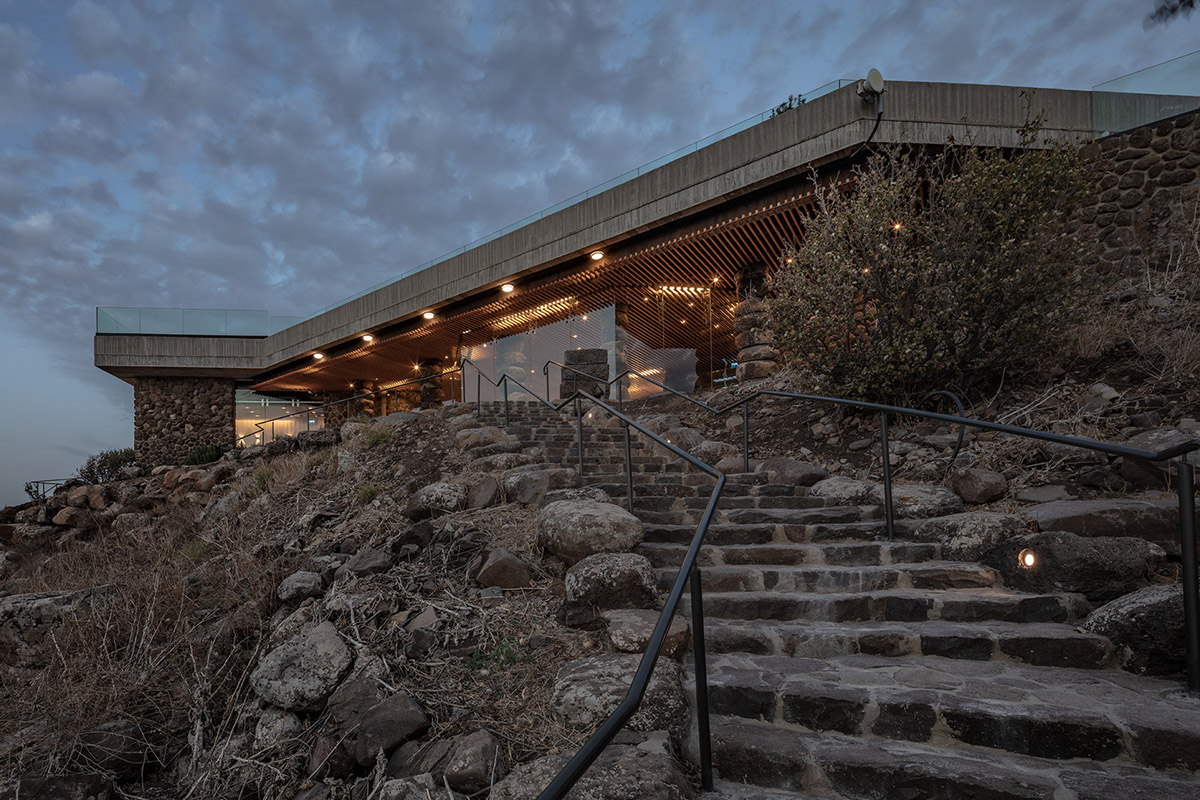


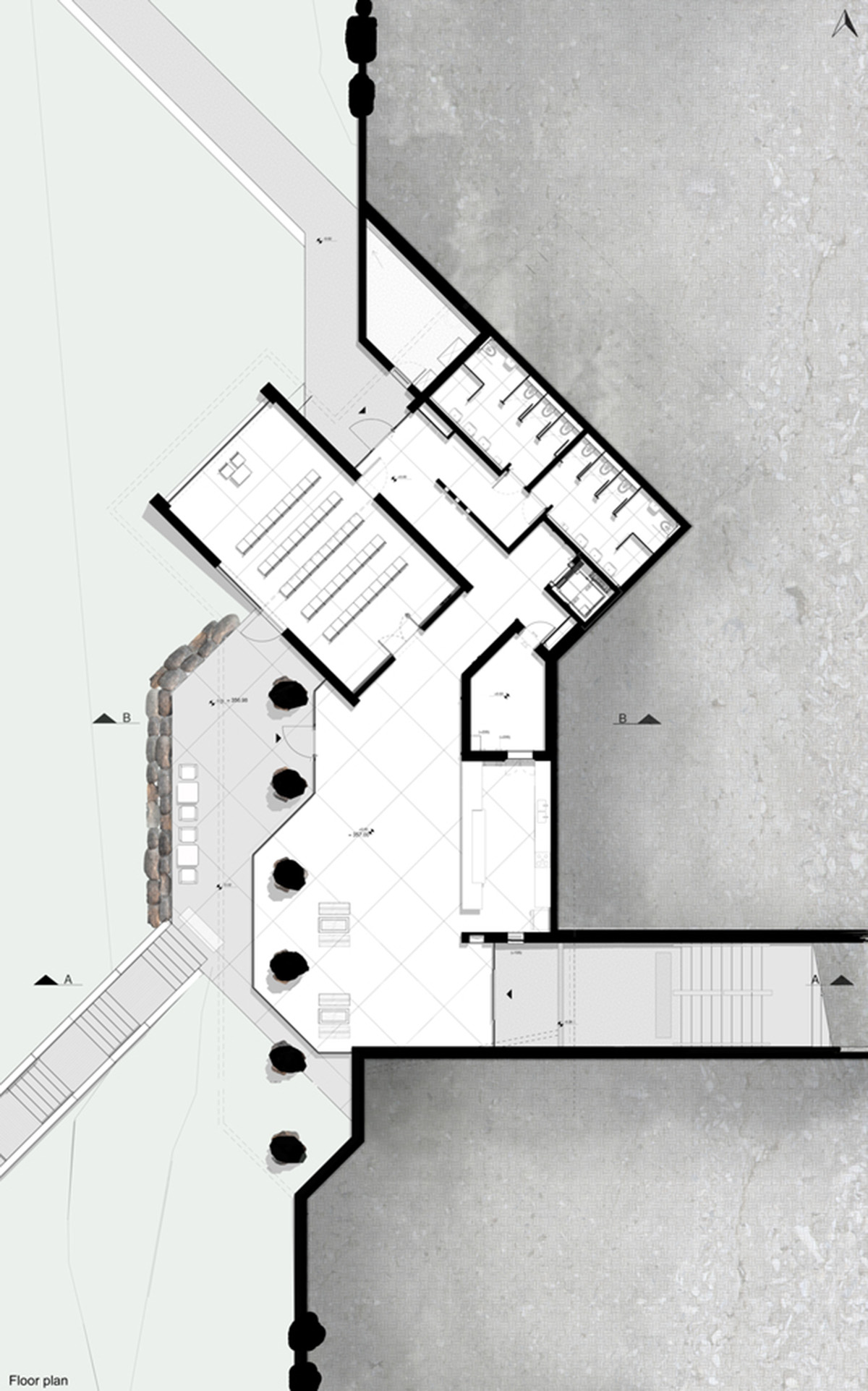
Floor plan

Section A-A

Section B-B
All images © UZI PORAT
> via Raz Architects
